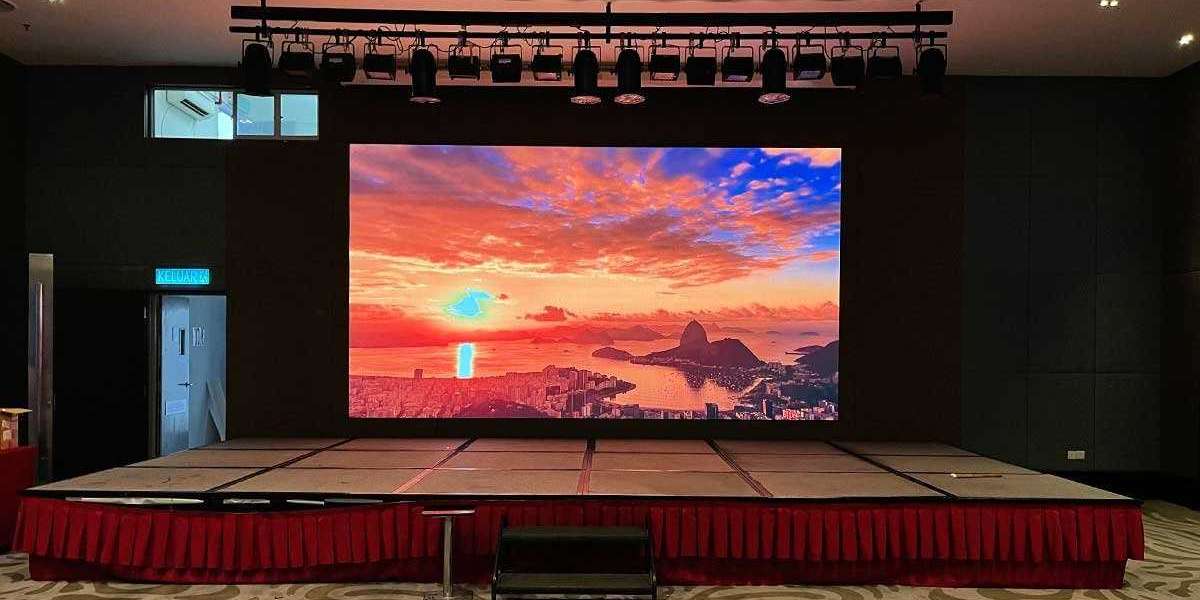Choosing the right Indoor LED screen can significantly elevate the visual experience in commercial spaces, control rooms, retail stores, educational institutions, and event venues. However, not all LED screens are made the same. With rapid technological advancements, it’s important to know what features truly make a difference in terms of performance, longevity, and user satisfaction. Below are the key features to consider when evaluating an indoor LED display.
Display Resolution and Pixel Pitch
One of the most important aspects of any LED screen is its resolution, which is directly tied to pixel pitch — the distance between the centers of two adjacent pixels. A lower pixel pitch means higher pixel density, resulting in better image clarity and detail, especially for close viewing distances. For indoor applications where viewers are closer to the screen, a fine pixel pitch such as P1.5 or P2.5 is ideal. This ensures content looks crisp, whether it's videos, presentations, or static graphics.
Brightness and Contrast Ratio
Brightness plays a critical role in the visibility of an LED screen, even in indoor environments. While indoor spaces don't require the ultra-high brightness needed for outdoor screens, having adequate brightness ensures content remains sharp under ambient lighting conditions. Equally important is the contrast ratio, which determines the depth and vibrancy of the visuals. A high contrast ratio enhances the distinction between dark and light areas, offering a more immersive viewing experience.
Refresh Rate
A high refresh rate is crucial for ensuring smooth video playback and reducing flicker, particularly for dynamic content or live events. LED screens with refresh rates of 1920Hz and above deliver better motion handling and visual comfort, especially when the screen is being filmed or photographed. This is especially important for professional environments where presentation quality must be flawless.
Color Accuracy and Uniformity
Color performance is a defining feature of any quality LED display. Look for screens with advanced calibration capabilities that ensure consistent color accuracy across the entire display surface. This becomes vital when displaying branding elements, advertisements, or presentations where color consistency impacts credibility and viewer engagement. Uniform brightness and color across panels contribute to a seamless, professional look.
Viewing Angle
Indoor LED displays are often viewed from different angles, depending on the placement and the layout of the space. A wide viewing angle, typically above 160 degrees horizontally and vertically, ensures that content remains clear and color-consistent from various positions in the room. This is particularly important in environments like conference halls, malls, or auditoriums.
Seamless Panel Design
For larger screens composed of multiple panels, it’s essential that the modules fit together seamlessly. Poor alignment can create visible lines or gaps that disrupt the viewing experience. Look for LED systems designed with precision-engineered cabinet structures that allow for easy and accurate alignment during installation. Magnetic modules and front-service access also add convenience for maintenance and adjustments.
Lifespan and Reliability
Indoor LED screens are an investment, so durability and longevity are key. High-quality LED modules typically offer a lifespan of over 100,000 hours. Additionally, features like efficient heat dissipation, low power consumption, and built-in protection against voltage fluctuations improve overall reliability. Consider displays that use premium-grade components and are backed by solid warranties and technical support.
Smart Control Systems
Modern LED screens often come equipped with smart control software that allows remote content management, scheduling, and monitoring. This is especially beneficial in retail and corporate environments where content changes frequently. Network connectivity and compatibility with various media formats enhance flexibility and ease of operation.
Easy Installation and Maintenance
A well-designed indoor LED screen should support straightforward installation, whether it’s wall-mounted, ceiling-hung, or free-standing. Lightweight cabinets, modular construction, and front-access designs simplify setup and ongoing maintenance. This not only saves time but also reduces long-term operational costs.
Conclusion
Selecting the right indoor LED screen involves more than just comparing prices. By focusing on crucial features like resolution, refresh rate, brightness, color accuracy, and ease of maintenance, you can make a choice that meets your technical and aesthetic needs. Whether it's for business presentations, advertising, or entertainment, a high-quality LED screen transforms the way content is delivered and experienced indoors.


